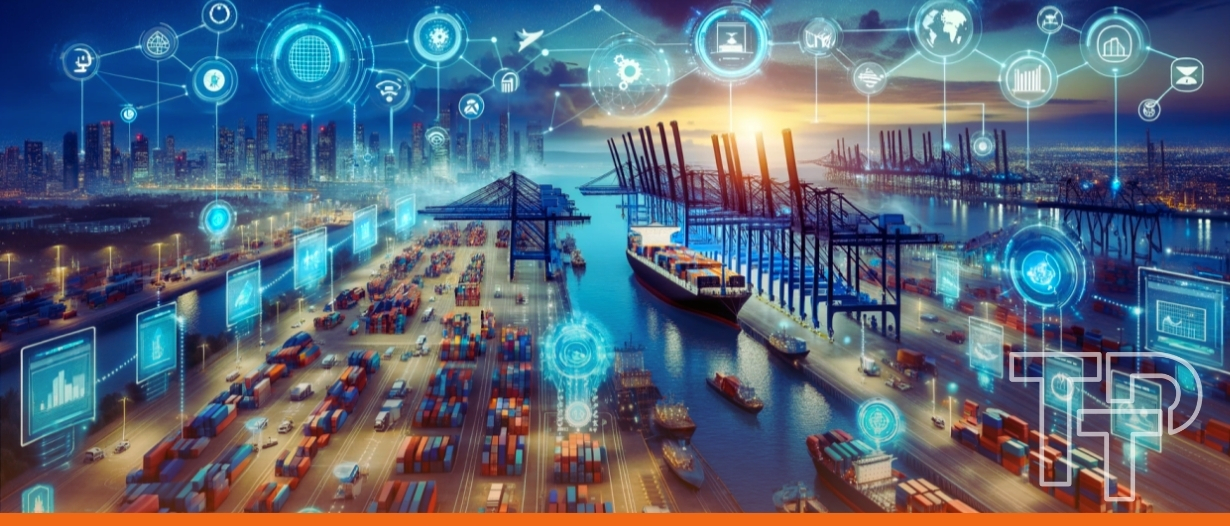The Prax Group story: From too big to fail to collapsing like a house of cards
Devanshee Dave
Jul 05, 2025
 David Meynell
May 02, 2025
David Meynell
May 02, 2025

Trade has been the driving force behind the rise and fall of civilisations, the expansion of empires, and the spread of technology, culture, and political ideologies. From the early barter systems of prehistory to today’s highly complex digital trade networks, the search for resources and markets has shaped human history more profoundly than any other single force.
Trade has created wealth, fuelled exploration and conflict, and connected distant corners of the world long before the modern concept of globalisation took shape. The continuity between ancient trade systems and today’s interconnected digital markets is striking, with the same underlying principles of supply, demand, and strategic dominance defining global commerce across millennia.
What makes this story even more remarkable is the way trade is evolving today. The foundations laid by ancient trade networks – the movement of goods, the establishment of financial systems, and the development of infrastructure – are now being reshaped by digitalisation, artificial intelligence (AI), blockchain, cloud computing, and eCommerce.
Trade began long before the establishment of written history. Early hunter-gatherer societies exchanged surplus goods such as food, flint tools, animal hides, and shells, often relying on barter systems. Archaeological evidence from the late Stone Age (circa 10,000 BCE) shows that flint from present-day Syria was traded across the Near East, while obsidian (a volcanic glass used for cutting tools) was traded as far as Anatolia and the Balkans.
By around 3000 BCE, the development of agriculture and the rise of the first urban civilisations in Mesopotamia (modern Iraq), Egypt, and the Indus Valley transformed trade from local bartering to more structured long-distance networks. The Sumerians of Mesopotamia developed some of the earliest recorded trade routes, exchanging surplus grain, textiles, and crafted goods for timber from Lebanon, lapis lazuli from Afghanistan, and gold from Egypt. Trade was facilitated by the invention of early writing systems such as cuneiform, which were used to record contracts, inventories, and trade agreements.
Egypt’s early trade networks were particularly extensive. By 2500 BCE, Egyptian merchants were trading up the Nile with Nubia for gold, ivory, and incense, while maritime trade routes brought cedarwood from Lebanon and spices from the Arabian Peninsula. The Egyptians also established commercial ties with the Minoan civilisation on Crete, which became an early centre of Mediterranean trade.
The rise of the Phoenicians around 1200 BCE marked the beginning of a new phase in Mediterranean trade. The Phoenicians, centred in present-day Lebanon, were master shipbuilders and navigators who established trading colonies across the Mediterranean, including Carthage (modern Tunisia), Sicily, and southern Spain. They traded Tyrian purple dye (extracted from sea snails), glass, and cedarwood in exchange for precious metals and foodstuffs. The Phoenician alphabet, which later influenced Greek and Latin scripts, emerged as a tool for recording trade transactions.
The principles established by early trade networks, the importance of infrastructure, standardisation of currency and weights, and the value of recording transactions, underpin modern trade systems. Just as early merchants tracked their transactions with cuneiform tablets and the Phoenicians created a common alphabet, today’s global trade relies on digital ledgers and smart contracts on blockchain networks. Blockchain-based platforms now provide the same role as ancient trade ledgers, offering security and transparency when recording transactions.
Furthermore, the rise of AI in managing supply chains reflects the same drive for efficiency that characterised early trade routes. AI-driven predictive models now anticipate demand and optimise logistics, mirroring the way early traders adjusted their routes based on seasonal changes and political developments.
The rise of the Greek and Roman empires in the first millennium BCE marked a period of unprecedented expansion and sophistication in trade. The Greek city-states, particularly Athens and Corinth, developed extensive trade networks throughout the Aegean and eastern Mediterranean. Athens relied heavily on imported grain from the Black Sea region, as its own arable land was limited. In return, Greek merchants exported olive oil, wine, pottery, and metalwork. The establishment of Greek colonies in southern Italy, Sicily, and the coast of modern-day Turkey reinforced these trade links.
The creation of a monetary economy around the 7th century BCE accelerated trade further. The first coins were minted in Lydia (modern Turkey) around 600 BCE and quickly spread to Greece and the wider Mediterranean. The use of coinage simplified trade and facilitated more sophisticated market exchanges.
The expansion of the Roman Empire from the 2nd century BCE to the 5th century CE created a vast and highly organised trade network across Europe, North Africa, and the Middle East. Roman roads, over 250,000 miles of them at their peak, facilitated the movement of goods, troops, and information. Roman trade was underpinned by the supply of grain from Egypt, which became the empire’s breadbasket. In return, Rome exported olive oil, wine, glassware, and luxury goods to the provinces.
Roman trade extended as far east as India and China via the Silk Road and maritime routes through the Red Sea and the Indian Ocean. Roman merchants imported spices, silk, and gemstones from India and China, while exporting glassware, metalwork, and woollen textiles. Roman coins (denarii) were found as far east as Vietnam and as far north as Scotland, reflecting the reach of Roman commerce.
The Roman system of standardised coinage, road networks, and customs regulations closely resembles modern financial and trade infrastructure. The euro, the US dollar, and the Chinese yuan play a similar role to Roman coinage, while international trade agreements mirror Roman trade regulations. Today, however, cryptocurrencies and central bank digital currencies (CBDCs) may be poised to replace traditional currencies in trade settlements, reflecting a shift towards decentralised financial systems.
Roman infrastructure also mirrors modern technological infrastructure. Just as Roman roads and ports allowed for the rapid and efficient movement of goods, today’s global trade relies on data centres, undersea cables, and AI-managed logistics hubs to enable the frictionless flow of goods and services.
The establishment of the Silk Road during the Han Dynasty (206 BCE – 220 CE) connected China to the Roman and Persian empires, creating the first trans-continental trade network. Chinese silk, which was highly prized in the Roman world, became the central commodity. Roman senators reportedly passed laws restricting the wearing of silk due to its expense and the outflow of silver to the East.
By the 7th century CE, the rise of the Islamic Caliphate under the Umayyads and Abbasids transformed eastern trade. Muslim merchants dominated the trade routes of the Indian Ocean and the Silk Road, creating a vast commercial network that extended from West Africa to Southeast Asia. The city of Baghdad, founded in 762 CE, became a key hub of trade, connecting the Mediterranean with India and China.
Trade through the Indian Ocean reached new levels of complexity. Arab dhows, with their triangular sails, carried spices from the Malabar Coast of India, incense from Yemen, and textiles from Persia. The Swahili Coast of East Africa exported gold, ivory, and enslaved people to the Middle East and India. Chinese porcelain and silk reached the Middle East and Africa in exchange for glassware and spices.
The modern equivalent of the Silk Road is China’s Belt and Road Initiative (BRI), which aims to rebuild the ancient trade routes through massive infrastructure investments across Asia, Europe, and Africa. Digital platforms are increasingly integrated into these networks, allowing trade to be conducted electronically and logistical operations to be managed in real time through blockchain and artificial intelligence.
By the late medieval period, the Italian city-states of Venice and Genoa had emerged as the dominant trading powers in the Mediterranean. Venice gained control over key trade routes to the Levant following the Fourth Crusade (1202–1204) and the establishment of Venetian colonies in Crete, Cyprus, and the Dalmatian coast. Venetian merchants imported spices, silk, and luxury goods from the Muslim world and sold them to northern European markets at a premium.
The Black Death (1347–1351) temporarily disrupted trade, but Venice and Genoa quickly recovered. Venice’s control of the spice trade from the Indian Ocean gave it immense economic and political power. Genoa focused more on banking and financial services, providing capital for trade expeditions and offering maritime insurance. The rivalry between Venice and Genoa shaped Mediterranean trade for over two centuries.
Today’s global trade environment reflects similar power dynamics. The dominance of major financial centres such as London, New York, Hong Kong, and Singapore mirror the influence Venice and Genoa once held over key trade routes. Just as Venetian bankers financed trade ventures, today’s financial institutions and digital platforms provide the capital and infrastructure that drive global commerce.
The discovery of the New World in 1492 and the rounding of the Cape of Good Hope by Vasco da Gama in 1498 shifted the centre of trade from the Mediterranean to the Atlantic. Portuguese explorers established trading posts in Goa, Malacca, and Macau, securing dominance over the spice trade. Spanish conquests in the Americas brought vast quantities of gold and silver into European markets, fuelling inflation and stimulating further trade expansion.
The British and Dutch East India Companies, founded in 1600 and 1602 respectively, established colonial dominance over trade in Asia. The Dutch seized control of the spice trade in the Indonesian archipelago, while the British established a stronghold in India.
Today’s multinational corporations like Amazon, Apple, and Alibaba have inherited the role once held by colonial trading companies. Just as the British East India Company used its monopoly to control trade in India, today’s tech giants dominate digital markets. The rise of smart contracts and AI-driven trade platforms mirrors the way colonial companies leveraged chartered monopolies to control trade routes and enforce trade policies.
Modern trade agreements such as the Comprehensive and Progressive Agreement for Trans-Pacific Partnership (CPTPP) reflect similar efforts to control and regulate global trade flows. Instead of state-backed monopolies, multinational corporations and trade alliances now shape the flow of global commerce.
The Industrial Revolution from the late 18th century transformed trade through mechanisation, steamships, and railways. The opening of the Suez Canal in 1869 shortened the trade route between Europe and Asia. The gold standard and free trade doctrines created an era of relative economic stability and rapid global trade expansion.
Following World War II, the establishment of the General Agreement on Tariffs and Trade (GATT) and the World Trade Organisation (WTO) formalised global trade regulations. The emergence of China as a manufacturing powerhouse in the late 20th century and the rise of container shipping (from the 1950s) revolutionised global supply chains.
Today, trade is shifting from physical to digital with platforms and solutions supporting direct consumer-to-business trade on a global scale. Blockchain technology is making supply chains more transparent and secure, while AI is automating logistics and compliance. The ICC has created, and continues to advance, digital trade rules and practices, whilst the legal environment is evolving to align with electronic trade documents with the ongoing uptake of the UNCITRAL Model Law on Electronic Transferable Records (MLETR) and the UK Electronic Trade Documents Act (ETDA).
Trade is increasingly influenced by technological advancements such as blockchain, artificial intelligence, and automation. The emergence of trade blocs and the rise of protectionism in some regions reflect ongoing tensions between globalisation and national interests. Nevertheless, trade remains at the heart of human progress, a powerful driver of economic growth, cultural exchange, and geopolitical influence.
The future of trade lies in further digitisation, digitalisation, and automation. Smart contracts on blockchain networks will replace traditional trade documentation, making trade finance more secure and efficient. AI-driven predictive analytics will optimise supply chains and inventory management.
AI is already automating logistics, customs checks, and compliance procedures, allowing trade to operate 24/7 without human intervention. From ancient caravans on the Silk Road to AI-driven supply chains, trade remains a defining force in human history – now more connected, instantaneous, and data-driven than ever before.

Devanshee Dave
Jul 05, 2025
Trade Treasury Payments is the trading name of Trade & Transaction Finance Media Services Ltd (company number: 16228111), incorporated in England and Wales, at 34-35 Clarges St, London W1J 7EJ. TTP is registered as a Data Controller under the ICO: ZB882947. VAT Number: 485 4500 78.
© 2025 Trade Treasury Payments. All Rights Reserved.